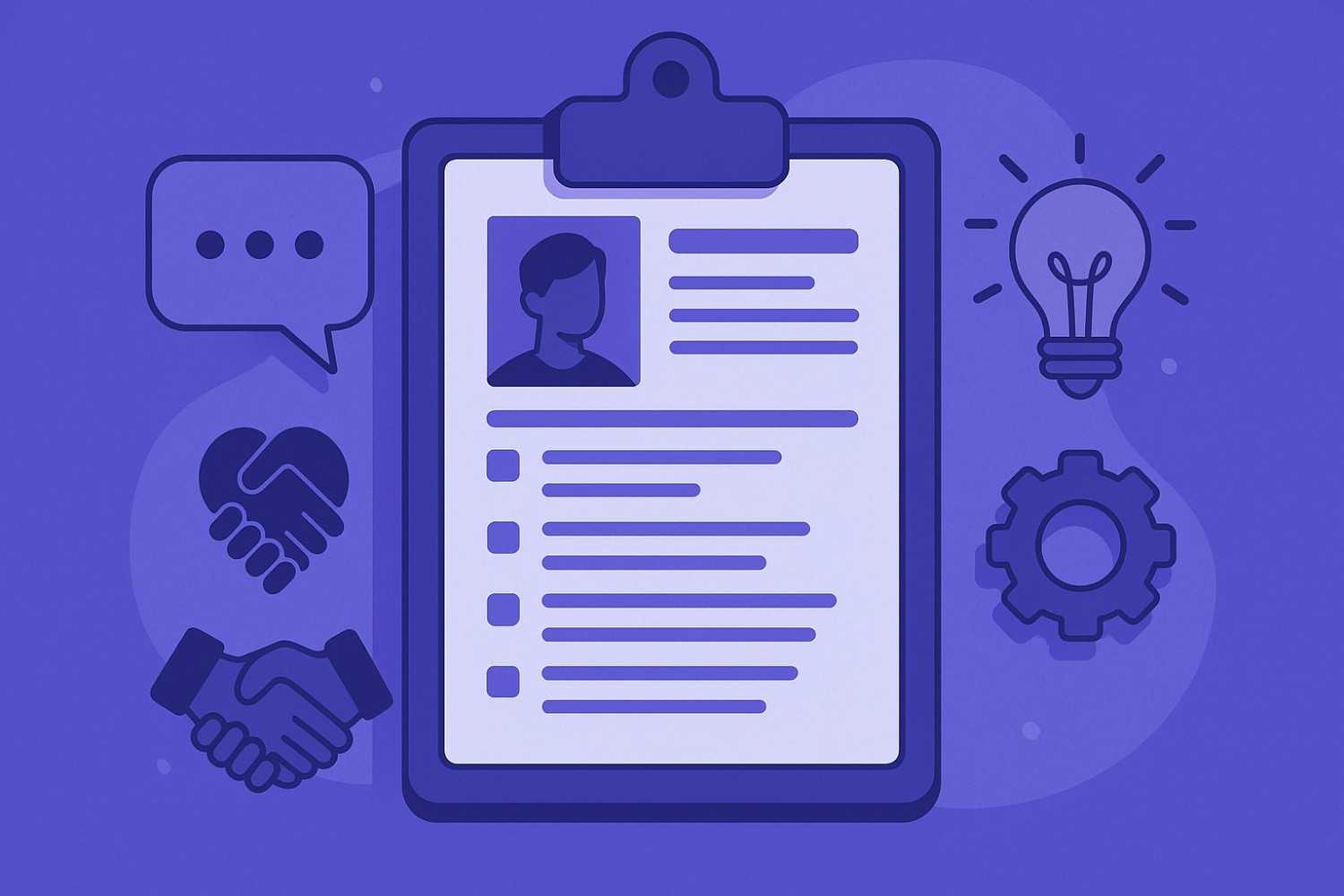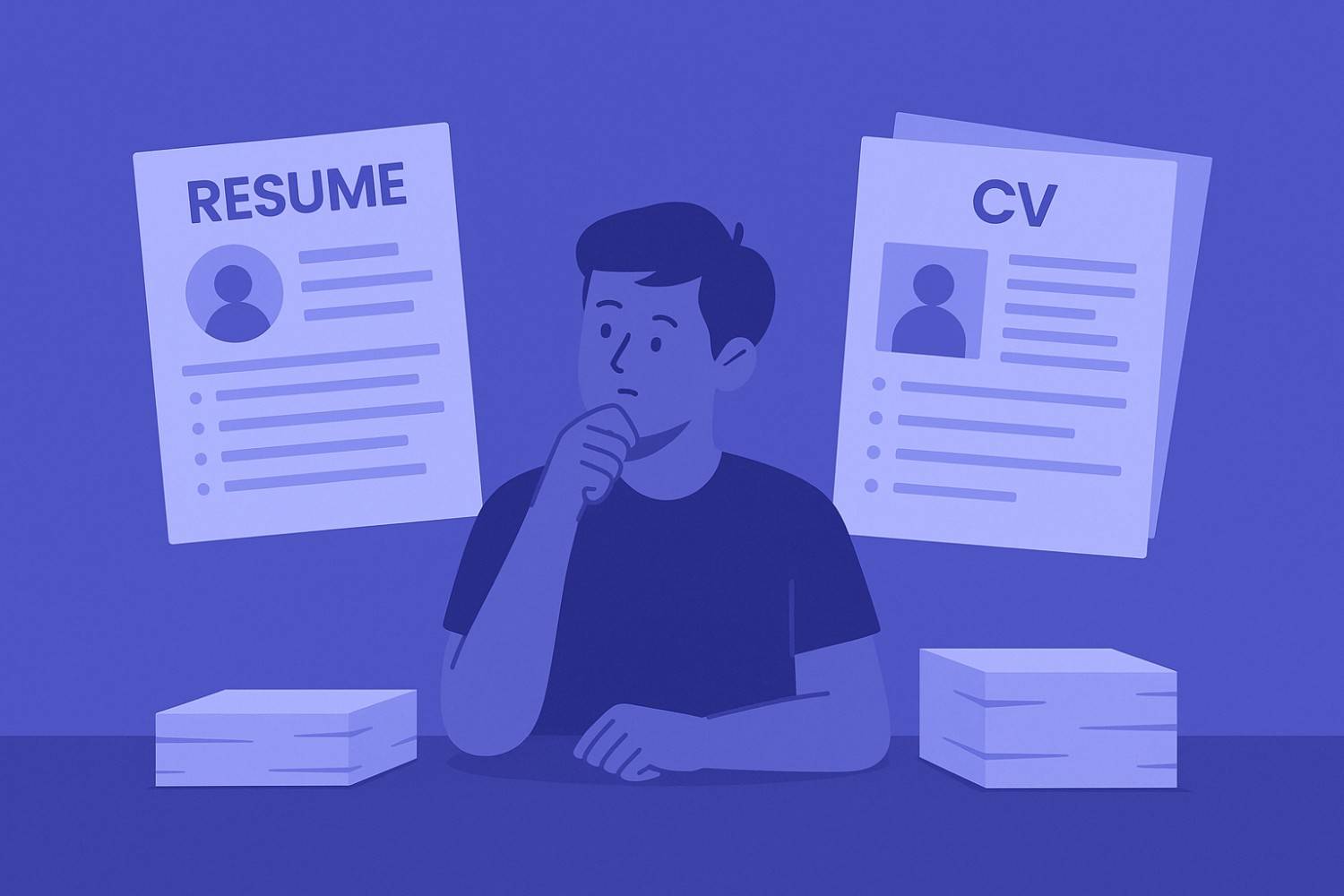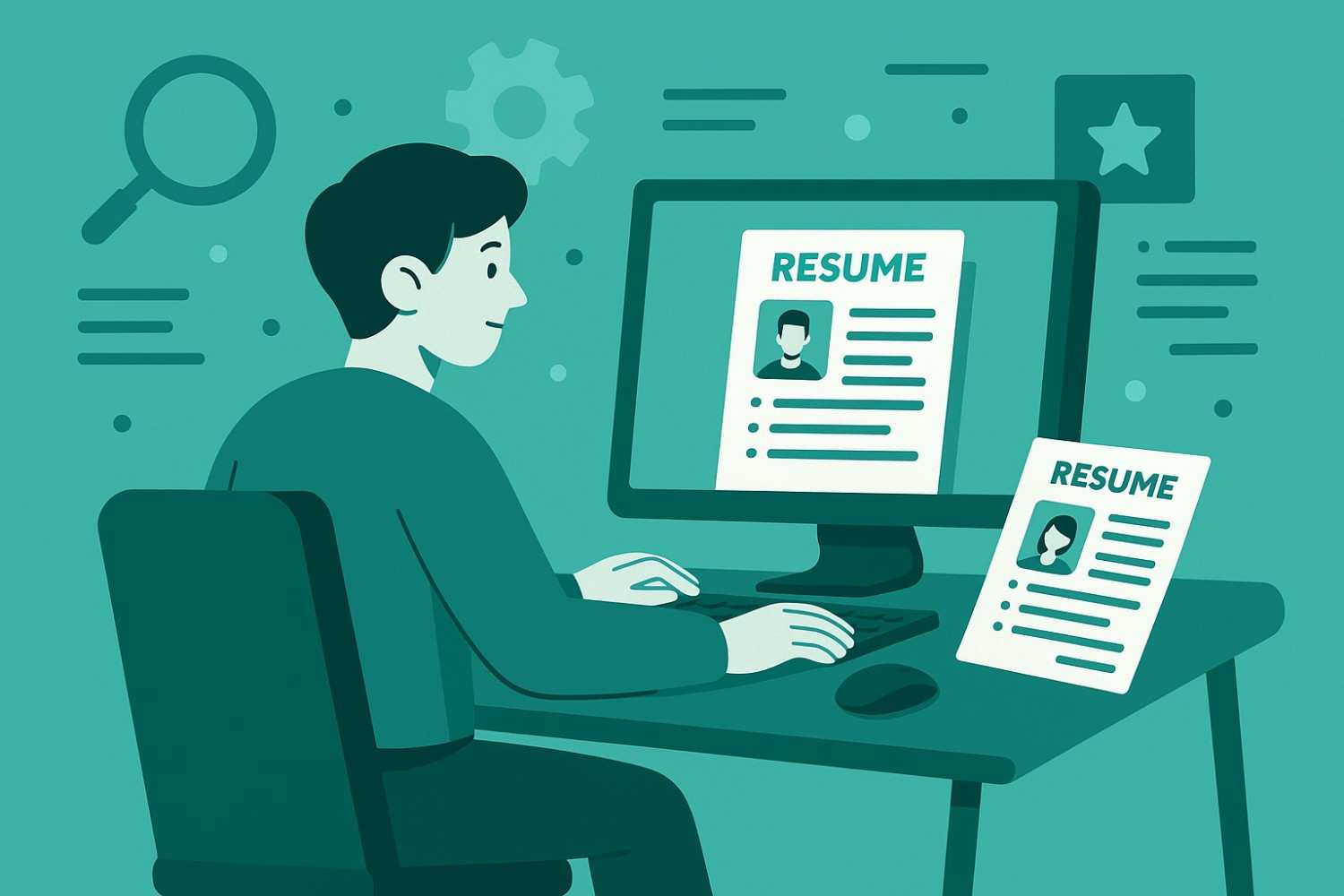How to Write a Strong Resume Summary or Objective That Gets Noticed

Discover the essential hard and soft skills to feature on your resume. Get real examples and tips to showcase your...

Understand the key differences between a resume and a CV, when to use each, and how to format them for maximum...

Learn how to craft a standout resume as a fresher with no prior work experience. Tips on formatting, sections,...

Learn how to craft a compelling resume summary or objective that grabs recruiters’ attention. Get tips, examples,...

Learn how to strategically use keywords in your resume to pass applicant tracking systems (ATS) and land more...

Learn how to write a strong resume with essential sections, examples, and tips: perfect for students, freshers, and...

Learn how to customize your resume for each job application. Improve your shortlisting chances by aligning your...

Learn the differences between chronological, functional, and hybrid resume formats. Choose the best layout based on...

Learn the most frequent resume mistakes freshers and professionals make, with tips to fix them and stand out in a...

A complete, beginner-friendly guide to writing a professional resume with clear steps, examples, and tips using a...
Resources
-

Set up personalized job alerts to receive notifications about new job openings that match your...
-

Find part-time job opportunities perfect for students, parents, and professionals seeking...
-

Work from home jobs across industries with flexible hours, competitive pay, and real career...
-

Create professional resumes with easy-to-use resume builders. Choose from templates, get...
-

Kickstart your career with internships tailored for students and graduates — explore paid,...
-

Remote jobs have revolutionized how we work, giving professionals the freedom to contribute from...
-

Find the best fresher jobs and entry-level opportunities across IT, Finance, Marketing, and...

Your resume is often the first—and sometimes the only—chance you get to make an impression on a hiring manager. In today's fast-paced job market, recruiters spend just a few seconds scanning each application to decide if it is worth a closer look. This is where a powerful resume summary or objective comes into play.
Placed right at the very top of your resume, this short section is your professional elevator pitch. It is a concise and compelling snapshot of who you are, what you have accomplished, and why you are the perfect fit for the job.
In this comprehensive guide, you will learn everything you need to know to craft this crucial part of your resume.
Why a Resume Summary or Objective Matters So Much
Imagine pouring hours into crafting a polished and detailed resume, only to have it skimmed and discarded in under ten seconds. That is the reality for many job seekers. Recruiters and Applicant Tracking Systems (ATS) are designed to look for relevance first. A well-written summary or objective is your best tool to capture their attention immediately.
It Grabs Attention Instantly By placing your top skills and most impressive achievements right at the beginning, you make it easy for a recruiter to see your value.
It Signals Your Alignment with the Role By strategically using keywords from the job description, you can show both the ATS and the hiring manager that you are a strong match for their requirements.
It Sets the Right Context A good summary or objective helps the reader quickly understand your experience level and your career goals, which helps them evaluate the rest of your resume more effectively.
It Boosts Your ATS Ranking The ATS software scores your resume based on how well it matches the terms used in the job description. A keyword-rich summary is a powerful way to increase your score.
Pro Tip: Always remember to tailor this section for each and every role you apply for. Even a brilliantly written summary will lose its impact if it does not echo the specific language and requirements of the job posting.
Summary vs. Objective: How to Choose the Right Format
Before you start writing, you need to decide which format is the right fit for your current professional background.
The Resume Summary A resume summary is a brief, 3-4 line paragraph that highlights your proven results and professional expertise. It is backward-looking, focusing on what you have already accomplished.
- Who it is best for: Professionals with two or more years of experience.
- What it focuses on: Your key achievements, skills, and any quantifiable impact you have made in your previous roles. It often includes metrics, specific tools you have mastered, and strong action verbs.
- When to use it: When you are applying for mid-level or senior positions where your past experience is your strongest selling point.
The Resume Objective A resume objective is a 2-3 3-line statement that defines your short-term career goals and expresses your enthusiasm for a role. It is forward-looking, focusing on what you aim to contribute and learn.
- Who it is best for: Entry-level candidates, career changers, and students applying for internships.
- What it focuses on: Your career aspirations, your transferable skills, and your eagerness to learn and grow within the company.
- When to use it: When you do not have a lot of direct work experience to showcase.
Research Job Descriptions and Identify Keywords
The first step in crafting a powerful summary or objective is to understand exactly what the employer is looking for.
1. Gather 3–5 Target Job Postings Find and save a few job descriptions for the same or similar roles. This will help you spot recurring keywords, skills, and qualifications that are important in your industry.
2. Highlight "Required Skills" and "Preferred Qualifications" Carefully read through the job descriptions and copy the exact phrases into a list. For example, if you are applying for a tech role, you might find:
- “Social media strategy”
- “Customer relationship management (CRM)”
- “Proficiency in Python, SQL, and Tableau”
3. Scan for Company Values and Culture Points Pay attention to the words the company uses to describe itself. Note terms like “collaborative,” “fast-paced,” or “detail-oriented.” Weaving these into your summary can enrich its tone and show that you are a good cultural fit.
Crafting Your Resume Summary: A Step-by-Step Guide
A great resume summary is a 3-4 line paragraph or a mini-list of bullet points that presents your professional story.
The Four Essential Components:
- Your Role/Title + Years of Experience
- Your Top Skills & Tools
- Your Key Achievements (with quantifiable metrics)
- A concluding statement on What You Will Bring to the company.
A Simple Structure Template:
[Years of experience] [Job Title] with expertise in [Key Skill 1], [Key Skill 2], and [Key Skill 3]. Proven track record of [Achievement #1 with a metric] and [Achievement #2 with a metric]. Passionate about [Your Industry or Function] and ready to [What you will contribute] to the team at [Company Name].
Real-World Examples of Resume Summaries
For a Mid-Level Marketing Manager:
"A results-driven Digital Marketing Manager with over 5 years of experience in the e-commerce industry. Expertise in SEO, SEM, and content strategy. Proven track record of increasing organic traffic by 150% and improving conversion rates by 30% through data-driven campaigns. Eager to bring my strategic skills to the team at XYZ Corp."
For a Senior Software Engineer:
"Senior Software Engineer with 8+ years of experience in building scalable backend systems using Python and AWS. Successfully led a team of 5 developers to launch a new microservices architecture, reducing server response time by 40%. Passionate about mentoring junior developers and driving technical excellence."
Crafting Your Resume Objective: A Step-by-Step Guide
A resume objective should be a concise, 2-3 line statement that is packed with enthusiasm and potential.
The Three Essential Components:
- A strong adjective that describes your work ethic.
- Your educational background or key skills.
- How you plan to contribute to the company's goals.
Real-World Examples of Resume Objectives
For a Fresher Applying for a Tech Internship:
"A motivated and detail-oriented Computer Science student with a strong foundation in Java and Python. Seeking a software development internship at [Company Name] to apply my coding skills to real-world projects and contribute to the engineering team's goals."
For a Recent Graduate in Finance:
"A recent Commerce graduate with a certification in financial modeling and advanced skills in Microsoft Excel. Eager to secure a Junior Financial Analyst position at another Company to apply my analytical abilities and support the finance team in data-driven decision-making."
For a Career Changer:
"An experienced customer service professional with 5+ years of experience, now seeking to transition into a Junior HR role. Recently completed a certification in Human Resource Management and eager to apply my strong communication and problem-solving skills to the team at [Company Name]."
Best Practices and Common Mistakes to Avoid
Best Practices:
- Keep it short and to the point. Your summary or objective should be no more than four lines.
- Use strong action verbs. Start your sentences with powerful verbs like "developed," "managed," "led," or "achieved."
- Include quantifiable results. Whenever possible, use numbers and metrics to showcase the impact of your work.
- Tailor it for every application. This is the most important rule. A generic summary will not get you very far.
Common Mistakes to Avoid:
- Making it too long. A long, dense paragraph is likely to be skipped.
- Using clichés. Avoid overused phrases like "hardworking," "team player," or "results-oriented" without providing any proof.
- Focusing only on what you want. This is especially true for an objective. Frame it around what you can offer the company, not just what you hope to gain.
- Typos and grammatical errors. This section is at the very top of your resume, so any errors here will be immediately noticeable and create a poor first impression.
Your Resume's First Impression is Your Lasting Impression
Your resume is your personal marketing document. The summary or objective is its headline. It is the first and sometimes only thing a recruiter will read, so it needs to be powerful, relevant, and compelling.
Take the time to understand whether a summary or an objective is the right fit for you. Do your research, identify the right keywords, and craft a statement that tells a clear and confident story about your professional journey and your potential.
To make this process easier and more effective, you can use the JobPe Resume Builder. It provides you with professionally designed templates and guides you through each section, helping you create a resume that is optimized for both the ATS and the human eye.
